
A cone is a geometric body consisting of a plane base bounded by a closed curve (the directrix) and every point of this curve is joined to a fixed point (the apex or vertex) lying outside the plane of the base. A pyramid is a special case of a cone with a polygonal base. If the directrix is a circle and the apex is perpendicularly above the center of the circle then the cone is a right circular cone. Then the cone has a rotational symmetry around the straight line passing through the apex (the axis of the cone). Each of the line segments between the apex and the base circle is a generatrix.
The main interest of this page is to see how right circular cones can be developed into a plane.
This is a right circular cone:
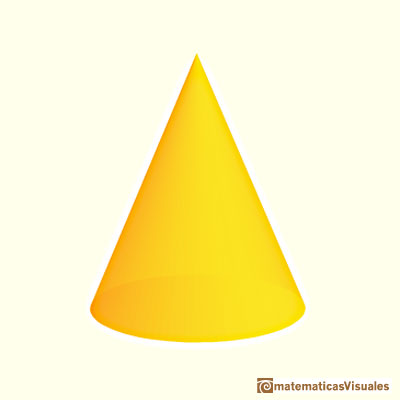
The cone developing into a plane:
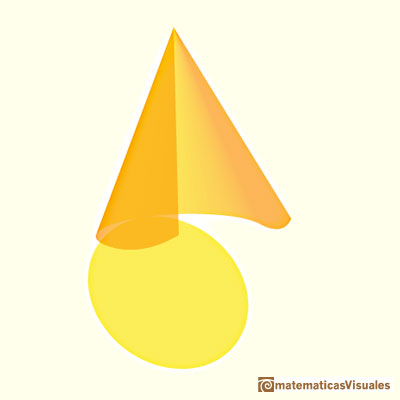
This is a plane development of a cone:
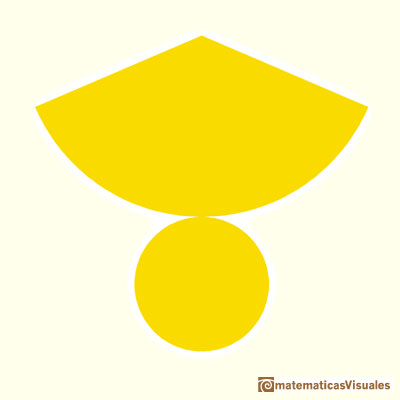
To calculate the lateral surface area of a cone we need the slant height. The slant height is the distance from the base circle to the apex of the cone (the generatrix as a segment). There is a relation between the slant height and the height of a cone (Pythagorean theorem).
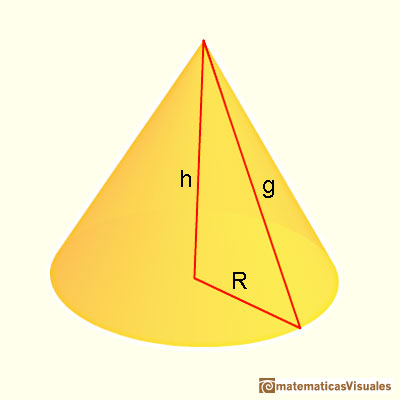
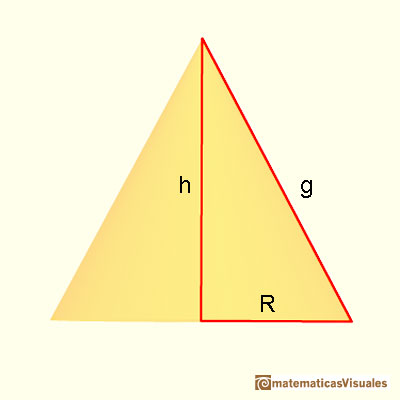
We are going to calculate the lateral surface area of a cone that is the area of a circular sector. If R is the base radius, the formula for the lateral surface area of a cone is like the formula for the area of a triangle. (The intuitive reason is like Kepler in Kepler and the area of a circle):
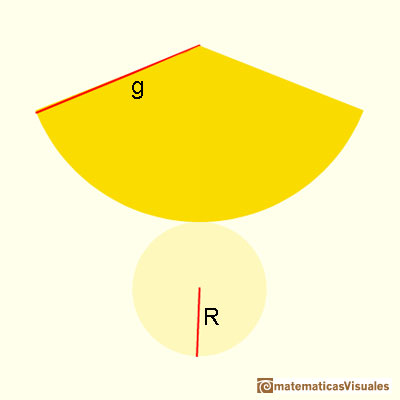
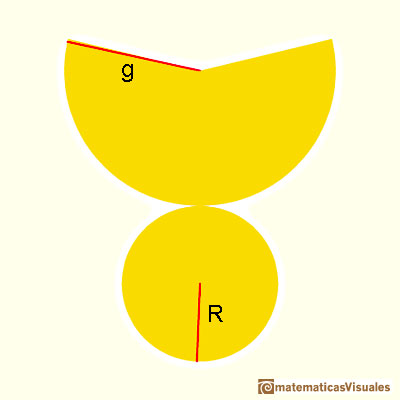
Do you remember the formula for the volume of a cone?
A cone with its apex cut off by a plane is called a truncated cone. If this truncation plane is parallel to the base then the body is called a conical frustum.
For example, this is a conical frustum:
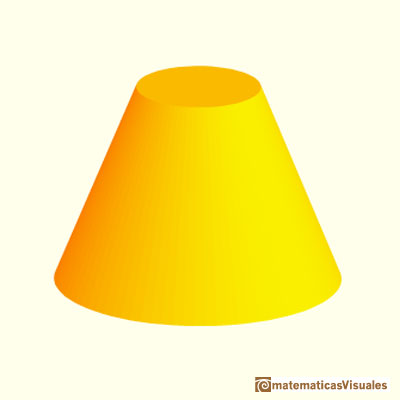
A conical frustum developing into a plane:
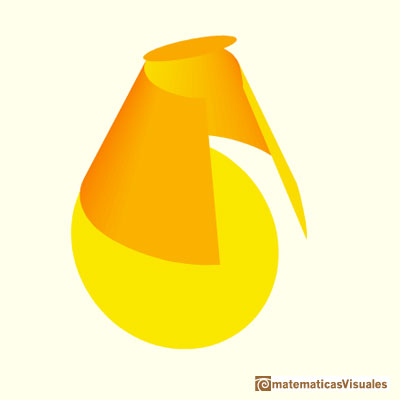
And this is its plane development:
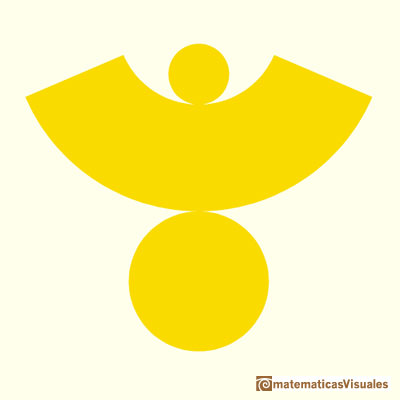
As before, we need the slant height to calculate the lateral surface area of a frustum:
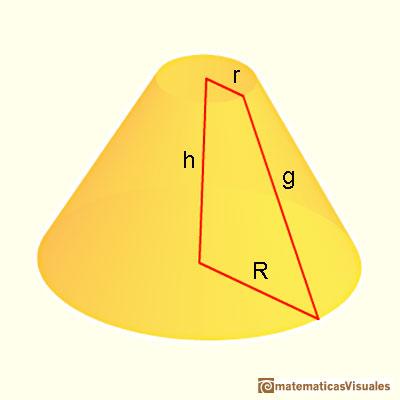
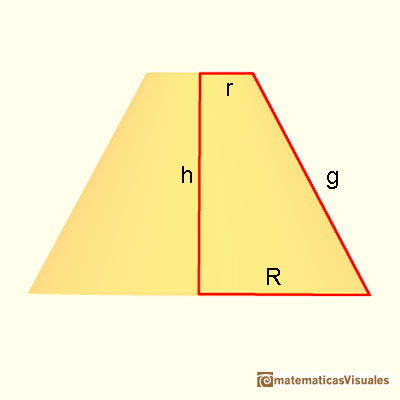
We can think, intuitively, that a cylindrical frustum is like a pyramidal frustum "with an infinite number of lateral faces". This is a very imprecise way of thinking that can remind us the origins of the Calculus, like Kepler's era. We can remind that the formula for the lateral surface area of a pyramidal frustum is like the area of a trapezoid (lateral faces are congruent trapezoids). When we calculate the lateral surface area of a conical frustum, the formula reminds us the formula for the trapezoid again:
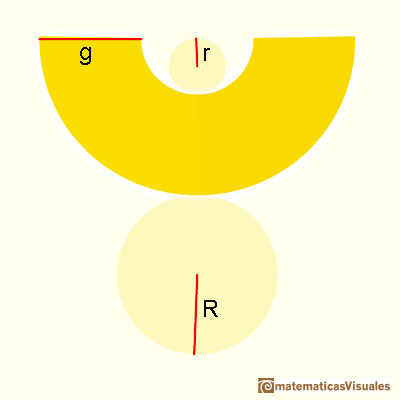
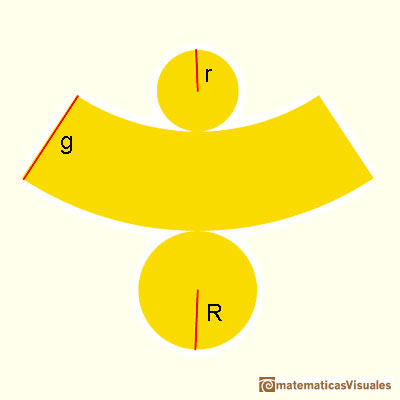
Door in Peñalba de Santiago (León, Spain, July 2016)
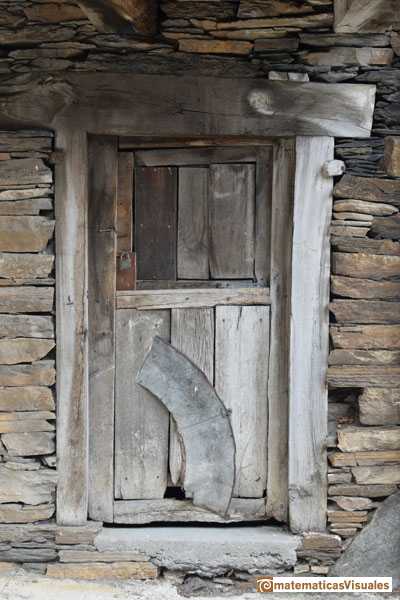
MORE LINKS























 NEXT
NEXT

 PREVIOUS
PREVIOUS







